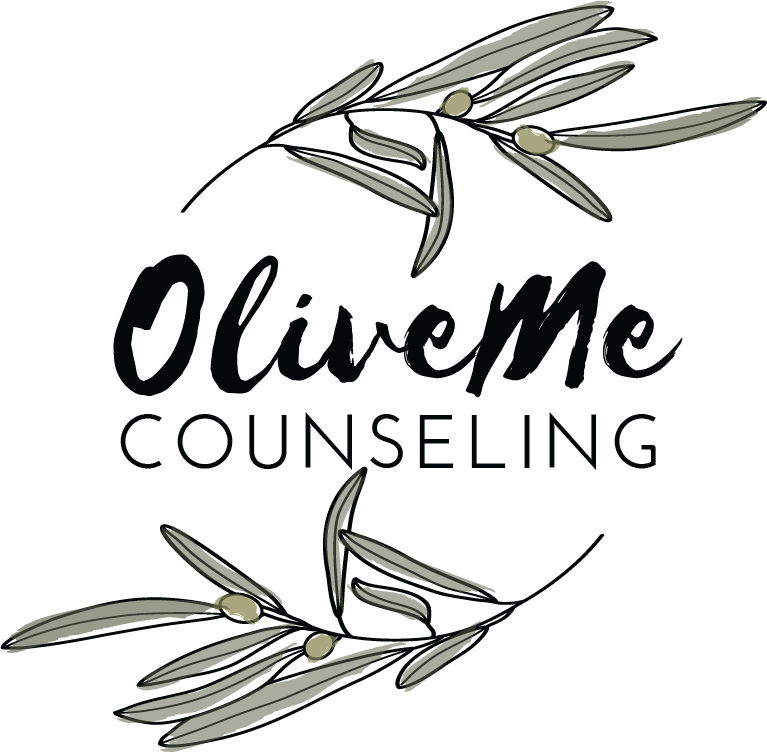Online Course on Emotions
Check out this self-paced online course to learn how to work with (not against) your emotions!
Other Blogs on Emotions
Joanne (OliveMe Counseling) and Melinda (Inviterra Counseling) are Enneagram therapists who love helping people grow beyond their reactive patterns of thinking, feeling, and doing. Listen to the introduction of their 4-part series as they discuss emotions, the Enneagram, the three Centers of Intelligence and dominant instincts.
Though we have all three Centers of Intelligence (head, heart, body), there's WAY too much emphasis on Head Center especially in the Westernized world. Read the blog to learn how to reconcile and integrate all three.
Join me and Lauren LaSalle as we talk on her podcast The Highly Sensitive Podcast about three ways to calm your nervous system as a Highly Sensitive Person (HSP).
Brainspotting can help your nervous system soothe itself when you’re feeling overwhelmed. Read more about how to do a specific type of Brainspotting even outside of therapy!
Our triggers are our body's way of signaling that there's an important thing that we need to heal from. We need to pay attention to our triggers instead of taking our triggers as signals that there's something wrong with us. Learn more about how to use your triggers as growth jumpstarters.
As a Highly Sensitive Person my external environment impacts my inner world, and vice versa. Read how I started recalibrating my physical spaces both at home and at work.
Numbness kicks in when your body is experiencing TOO MUCH: stimulation, experiences, demands, sounds, colors, emotions, etc. Learn how to take your body’s cue and take care of yourself well.
Find out how to work with (not against) the emotion of fear and experience of anxiety so that you know how to stay anchored, keep your emotional balance, and be engaged with life despite the uncertainties.
We live in a society addicted to happiness, but does not know true joy. Discover the nuts and bolt of joy that is not the absence of the hard parts of life, but one that persists nevertheless.
Sadness goes hand in hand with joy, as both of them speak to what really matters to you. Here are some books, podcasts, and resources that can help you navigate sadness well.
Anger, though labeled as a “BAD” emotion, can actually help people PROTECT what matters most and PURSUE what they want in life. Here are some books, podcasts, and resources that can help you wield anger well.
Read about what emotional habits you have as your Enneagram type. How do you do the BIG 5 emotions of MAD, SAD, GLAD, SCARED, and NUMB?
These resources validate emotions and provide strategies to work WITH them for a balanced life.
Listen to a conversation with Melissa Moore on Faith Hope Love about the different types of toxic relationships and shared resources and tools for stronger, healthier connections.
I sat down with Melissa Moore and Faith Hope Love to chat about trauma, its symptoms, and how we can retrain ourselves to move on from trauma.
When traumatic events throw healthy nervous systems off track, we can get into “stuck on” and “stuck off” modes, making it hard to balance between relaxed and alert. When we’re stuck in these modes, we fall back to our habitual reactive patterns. This post can help you determine if your nervous system is stuck “on” or “off.”
The Highly Sensitive Person (HSP) is someone who has the four distinctive traits DOES: (D) Depth of Processing, (O) Overstimulation, (E) Emotional Reactivity & Empathy, and (S) Sensitivity to Subtle Stimuli. HSPs help our society become more empathic, reflective, and interconnected. Learn more about life as an HSP and their specific needs.
Juggling many tasks and responsibilities is HARD. Prioritize tasks before making irreparable mistakes by identifying which of these juggled “balls” are made of rubber, glass, or wood.
You’ve heard of the Bucket List. How often do you look at such a list and think, “I’ll never get there”? Well, we can actually BUILD motivation and momentum by going the opposite direction with the REVERSE Bucket List!
Feeling stuck in life? Not sure how to get to where you want to be? Tap into your brain's ability to ideate solutions through the Bridge Exercise!
You may feel sometimes like you’re going in circles - expending so much energy, time, and resources to change, only to find yourself in the same place all over again. As more time goes on, you feel like the future is bleak - what’s the point of trying, if it’s going to be the same? Perhaps what’s the issue is not what’s happening but how you perceive what’s happening. What if you ARE actually changing?
Feeling stuck and dissatisfied with life? Use this vision exercise so that you can break out of the swamp of discontent and break down big, abstract dreams into concrete, bite-sized actionable steps.
Do you feel like your needs don’t matter, despite how much you do for others? Learn how to move towards radical candor, a relationship stance that creates room in the relationship big enough for both yourself and others.
As a follow-up exercise to the Top 10 Best/Worst Memories List, the Life Timeline helps you visually see what larger periods of your life were like and recognize what kinds of needs were and weren’t met.
Learn how to create and use the Top 10 Best/Worst Memory list so that you can better understand how the past influences your present and thereby intentionally design a better future.
The part of your brain that helps you make wise, sound decisions to manage stress is the very part that also shuts down when you pass a certain threshold. Keep yourself grounded and balanced with this handy worksheet!
Feeling overwhelmed by a million things that seem both important and urgent? Click here to learn how to declutter and focus with the triage chart!
Brainspotting is a brain-based processing method similar to EMDR that channels the body’s natural ability to heal itself from overwhelming or stressful experiences that generate symptoms like anxiety, depression, hypervigilance, and overreactivity. It does so by finding specific eye positions (Brainspots) linked to unprocessed stress experiences stored in the brain and letting the body “detox”.
If your loved ones are feeling really overwhelmed with “big feelings” like anxiety, anger, or sadness, here’s one way to help them anchor themselves to the present and reduce stress using the five senses.



































Joanne (OliveMe Counseling) and Melinda (Inviterra Counseling) are Enneagram therapists who love helping people grow beyond their reactive patterns of thinking, feeling, and doing. Listen to part 4 of their 4-part series as they discuss the Head Triad and their central emotion of fear.